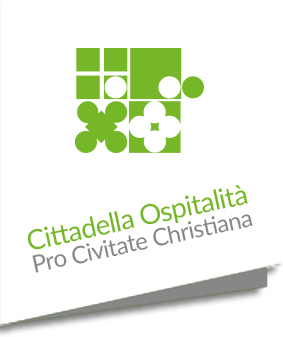The Chiesa di S. Maria Maggiore is located outside the first city walls in Piazza del Vescovado, heart of the medieval Bishop’s citadel and centre of religious power until the XI Century, when the title of Cathedral was given to S. Rufino.
The simple façade, vertically divided by pilasters, shows a pointed archway with a rose window dated 1162 and signed Johannes (perhaps Giovanni da Gubbio, the same architect who built the Cathedral of S. Rufino). The bell tower, in Romanesque-Gothic style, was raised in the XIV Century.
Francesco was baptized in the temple. The interior has a basilica plan with three naves separated by pillars. The aisles, the semi-circular apse and the sacristy bring to light some remains of frescoes from the XIV and XV Centuries: among these, worth noticing is a “Pietà” (perhaps by Tiberio d’Assisi) and some works by Pace di Bartolo. According to tradition, the Chiesa S. Maria Maggiore commissioned by the Bishop Savinio was founded in the IV Century on a pagan temple named after god Giano, on the lower terrace of the Roman city of Assisi. A confirmation of this archaeology occurred through the excavations of 1864 and, in 1954, the naves of a Roman domus dating back to the I Century A.D. were discovered: the domus was identified as the home of the Latin poet Properzio (originally from Assisi) who lived at the court of Emperor Ottaviano Augusto. The excavations also brought to light a sarcophagus from the VIII Century, presently located at the end of the southern aisle. The early Christian basilica was rebuilt little before the year one thousand, period to which the crypt under the presbytery dates back to.
During the early Middle Ages, S. Maria Maggiore was an episcopal residence (the oldest local parchment attested it for the first time in 963) which dates back to the episcopate of Eremedio. In 1035, at the time of Bishop Ugone, the title of Cathedral passed from S. Maria Maggiore to the Chiesa di S. Rufino, where the relics of the Patron Saint were preserved.
Francesco was a frequent guest of Bishop Guido I, so he regularly visited the adjoining Bishop’s Palace. It was there that the Saint stripped off his clothes, nurturing a special bond with the Chiesa di S. Maria Maggiore. At the moment of his conversion (1206), the Bishop was particularly close to the “Poor Man of Assisi”: in fact, Guido I facilitated his visit to Pope Innocenzo III (1210), pontiff he was familiar with.
A stone on the external side of the apse attests that the work was carried out in the time of Francesco and Bishop Guido, in 1216. A second inscription with a portrait of the Saint was painted on the apse, but it was lost during the disastrous earthquake of 1832 (the roofs of the naves fell down and the decorations of the church remained seriously damaged). The surviving paintings are all made by Umbrian artists active during the XIV and XVI Centuries. The remains of the Roman walls can be admired from the garden.
The Santuario della Spogliazione (Sanctuary of the Spoliation) is located in the Chiesa di S. Maria Maggiore, next to the Bishop’s – the ancient Cathedral of Assisi where S. Francesco received baptism.
The Santuario della Spogliazione was born in the place where the Poor Man of Assisi took off his rich clothes in front of his father Pietro di Bernardone, in order to wear the “habit of the poor”. Still, it is not clear if this episode took place exactly in front of the church or inside the Bishop’s – Sala della Spogliazione (Room of the Spoliation) –, or even inside the cloister of the palace.
